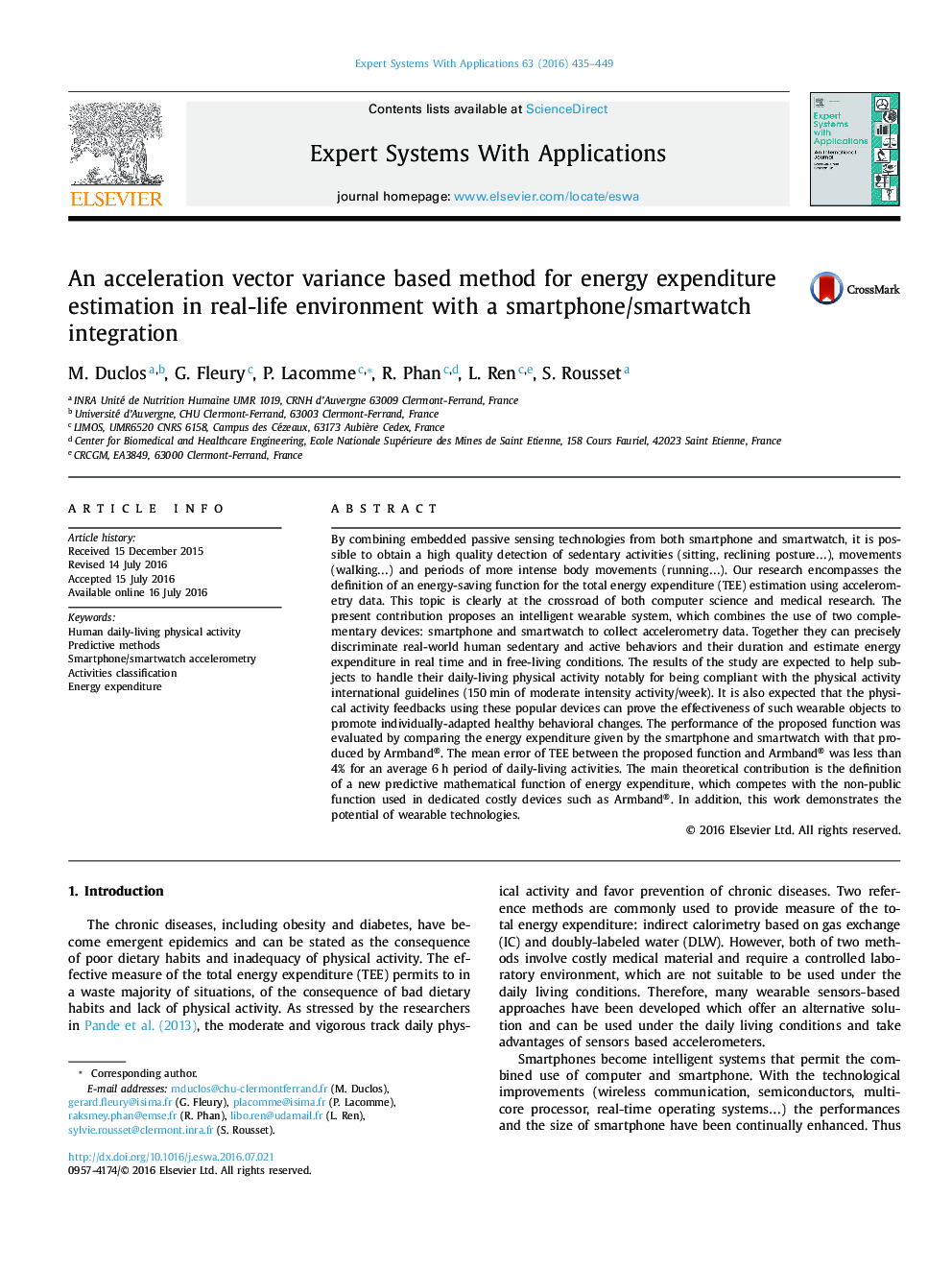| کد مقاله | کد نشریه | سال انتشار | مقاله انگلیسی | نسخه تمام متن |
|---|---|---|---|---|
| 383002 | 660799 | 2016 | 15 صفحه PDF | دانلود رایگان |
• Investigating the TEE evaluation by predictive functions using smart-{phone, watch}.
• Using a personalized MET value in regard of the characteristics of participants.
• New activities classification model to obtain an TEE estimation.
• Gap less than 4% on both activities classification and TEE.
• Free Research application available on Google Play.
By combining embedded passive sensing technologies from both smartphone and smartwatch, it is possible to obtain a high quality detection of sedentary activities (sitting, reclining posture…), movements (walking…) and periods of more intense body movements (running…). Our research encompasses the definition of an energy-saving function for the total energy expenditure (TEE) estimation using accelerometry data. This topic is clearly at the crossroad of both computer science and medical research. The present contribution proposes an intelligent wearable system, which combines the use of two complementary devices: smartphone and smartwatch to collect accelerometry data. Together they can precisely discriminate real-world human sedentary and active behaviors and their duration and estimate energy expenditure in real time and in free-living conditions. The results of the study are expected to help subjects to handle their daily-living physical activity notably for being compliant with the physical activity international guidelines (150 min of moderate intensity activity/week). It is also expected that the physical activity feedbacks using these popular devices can prove the effectiveness of such wearable objects to promote individually-adapted healthy behavioral changes. The performance of the proposed function was evaluated by comparing the energy expenditure given by the smartphone and smartwatch with that produced by Armband®. The mean error of TEE between the proposed function and Armband® was less than 4% for an average 6 h period of daily-living activities. The main theoretical contribution is the definition of a new predictive mathematical function of energy expenditure, which competes with the non-public function used in dedicated costly devices such as Armband®. In addition, this work demonstrates the potential of wearable technologies.
Journal: Expert Systems with Applications - Volume 63, 30 November 2016, Pages 435–449
